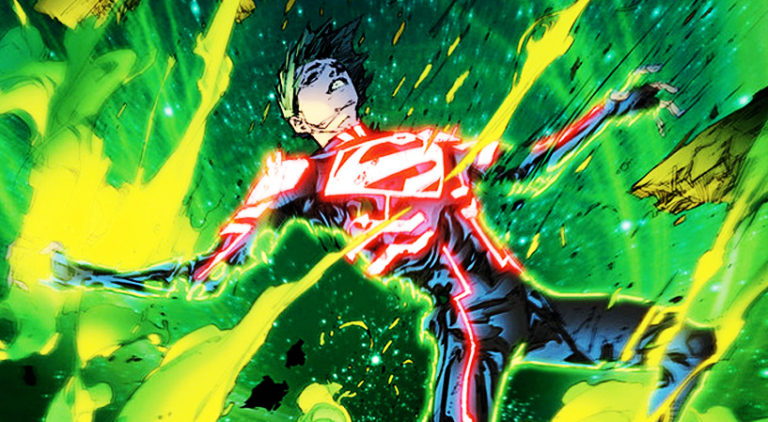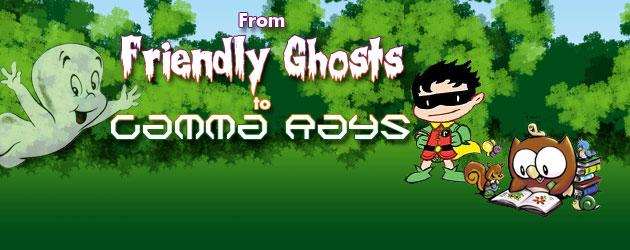 39 Minutes
39 Minutes
Publisher: Top Cow
Story: William Harms
Pencils: Jerry Lando
Inks: Jay Leisten, Jerry Lando
Colors: Brian Buccellato, Linda Sejic
Letters: Troy Peteri
39 Minutes is a newly published trade paperback featuring the first four chapters of William Harms’s military crime-thriller story. The story focuses on an ex-Marine’s Special Forces team, freshly shipped home following their participation in the war in Iraq, and the interesting career choice they make upon their return to the United States. It’s not really spoiling anything to say that they choose to become violent bank robbers, as that’s indicated on the marketing copy on the back cover of the book.
This isn’t just a shoot-‘em-up story of bank robbers with military training and heavy weaponry, although there is a lot of very bloody, graphic action along those lines. Like any good comic story, this is about the characters – what makes them tick, why some of them chose to become bank robbers, and why one of their team chose to go to prison in order to keep his principles. The twists and turns behind the story are original and engaging.
The first chapter of the story was published back in 2010 as part of Top Cow’s “Pilot Season” project, wherein first issues of a variety of stories are published and fans vote on which one should win and be turned into a fully developed story line. I didn’t read the other entries of the project, but it’s easy to see why 39 Minutes won. This first chapter completely sucks the reader in. By page two, I was shocked, as my expectations of what was going to happen were completely thrown in disarray. On page three, Harms had me hook, line, and sinker. The strategy behind how the characters rob the bank is very original – at first I thought we were getting a retread of the movie Heat, but I couldn’t have been more wrong.
As mentioned, this is a story about characters, and there is some good work here, but given only four chapters to work with and a large cast of both primary and supporting characters, it is a bit difficult to really delve into the motivations and psychology of the main characters. I would have preferred a bit more focus on the leader of the bank robbers, and just exactly how he was able to convince the rest of the squad to go along with his scheme. It was a little difficult to connect the dots behind what happened to the Marines in Iraq and what turned them into a gang of murdering criminals once they returned home.
The conflict for the main characters (we can’t really call them “protagonists”) comes from the requisite law enforcement agents, but they are really just there to provide a platform for introducing the robbers’ true opponent – their former special forces commander John Clayton, who has been serving a prison sentence on trumped up charges related to his tour of duty in Iraq. In terms of character development, Clayton is the most fully fleshed-out character. It’s clear why he chose to go to prison for his principles when he could just have easily lied and been set free. He’s intelligent and motivated to do the right thing even when the lines between right and wrong get blurred. Harms’s handling of the character makes his voice the most easily recognizable one in the story; the other ex-Marines who form the bank robbing gang are mostly interchangeable, with only one main scene toward the end of the book where we begin to see them as individual characters. Clayton doesn’t suffer from this rather broad depiction of character tropes.
The art in the series is provided mainly by Jerry Lando, who does the pencils for the entire series as well as inking chapters 2-4. Lando really has a strong grasp on the use of perspective and provides a variety of interesting angles to help tell the story. We don’t just see characters shown at torso level throughout the series, but instead are treated to some really great overhead and even worms-eye-view scenes that are really well done. His layouts and depictions of action scenes are very strong.
As a relatively younger artist, one thing Lando could work on is his portraiture. There’s nothing necessarily wrong with his characters – overall they look good, the proportions are spot-on, and there are no weird or impossible figure poses so often seen in comics. As individuals, however, some of his characters are a little tough to tell apart, particularly the ex-Marines who all have the standard military buzz cut. At times, even when unmasked, the robbers are very difficult to distinguish from each other. The rest of Lando’s art is strong enough, however, that it’s clear this is something that he’ll develop with time.
The first chapter is inked by Jay Leisten and colored by Brian Buccellato, and it has a very different look and style to it than the remaining four chapters. Leisten’s inking consists of very heavy, thick lines, which at times almost overpower Buccellato’s coloring job. By contrast, chapters 2-4 are linked by Lando himself, and the colors are provided by Linda Sejic. These chapters have an entirely different look to them, and for the better. I really like Buccellato’s coloring usually, but I think he’s more suited to superhero-type stories. 39 Minutes is a story that requires a bit more subdued coloring and art, and Lando and Sejic provide that for the later chapters of the book. The coloring takes on an almost painting-like quality, and the inking is much more subtle. Again, nothing against Buccellato and Leisten, but I’d love to see the first chapter recolored and re-inked like the rest of the book just for the sake of consistency.
The strength of 39 Minutes really comes from the storytelling. Harms has invented a very innovative look at the modern crime spree story, and does an excellent job mixing genres with nods to military, crime, thriller, action, and mystery stories, and combining them into a very engrossing, original idea.
Martin Thomas
@comicattack.net



